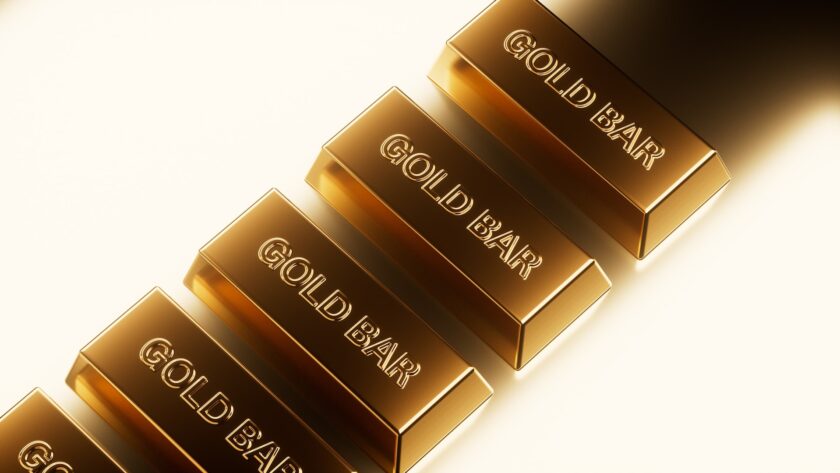Money and precious metals have been linked for centuries. Gold is present in myths, legends, and our culture. Most people associate it with wealth, and it’s no wonder that banks keep it under lock and key. It’s the only international currency that doesn’t care about borders, which makes it extremely valuable.
Gold is scarce, and governments and banks want to have as much of it as possible. But you can’t have a crude ore in a modern safe. Instead, the natural element gets refined into 99.9 percent purity bars. Those bars are called bullion, and they can be of either silver or gold. Click here to read more.
Contents
Why is bullion important?
In the age of modern money where everything is digital, why would we need bullion? Before the 70s, money was linked to gold. Every country could issue out as much paper bills as they had gold in their central bank. But when Richard Nixon came to power in the United States, the global monetary landscape changed.
Instead of money being linked to gold, or another precious metal, the government decided to link it to trust and the potential of an economy. If you ever wondered how inflation came to be so rampant and ravaging, the starting point is right when the world abolished the Gold Standard. Follow this page for more info https://www.investing.com/analysis/yes-gold-is-an-alternative-form-of-money-200641687.
With money linked to an unmeasurable concept, governments started printing paper bills, in an effort to boost the economy. That idea worked wonderfully in the short term. But now, we’re living in the long term, and things are not looking well. Everything is becoming more expensive, and there’s no way to keep up with the costs of living.
That’s exactly where gold comes in again. Precious metals are currencies, and they have been for thousands of years.
Like the engineers say, if something isn’t broken, don’t fix it. The monetary system wasn’t broken. Governments attempted to fix it, and they failed. The logical step is that gold will be recognized as legal money again, and it’s only a matter of time.
Major world powers like Russia, India, China, and Saudi Arabia are in the talks of creating a new world currency that will be linked to precious metals. The dollar is constantly losing value, which is why getting some gold in your portfolio sounds like a great idea.
Even though precious metals aren’t linked to money, central banks still keep it as a reserve asset. Experienced investors frequently buy bullion to hedge against inflation. Places like Turner Investments have great info on it.
Around 20 percent of the world’s gold is kept inside central banks, and they use it to settle debt, or boost the economy in times of need.
What’s a bullion exchange?
The International Bullion Exchange serves as a gateway of precious metal imports. There are many companies and countries that meddle with precious metals. It’s a tricky subject because a kilogram costs more than $60,000.
When so much money is at stake, bad actors jump in the space trying to make a quick profit and create counterfeit goods. A bullion exchange works as a body to confirm the authenticity of imports, and channels them through the exchange.
Exchanges bring together market participants and ensure transparent trading. This allows for more assurance in the quality of precious metals, improved price discovery, and better integration with other financial markets. Click on this link to read more.
How to banks handle bullion?
There’s a hidden force that moves the world, and it’s called interest. Banks know and influence interest, which eventually moves the economy in a specific direction. Here’s how.
Every country has a central bank. It’s the place where monetary policies get discussed, interest rates change, and it’s the place where all the gold is stored.
Central banks can lend silver and gold to bullion banks for a predetermined amount of time. It can be anywhere from three months up to a year. The bullion bank pays cash to the central bank, based on the value of the gold received.
Then, this money gets lent out to the market at a lease rate. It the rate is high, there is more incentive to lend gold from the central bank stores. If not, then trading and selling is on the decline.
On the other hand, the bullion banks that are in possession of the precious metals can sell it, or lend it to mining companies. Visit this page to find out more https://www.cnbctv18.com/personal-finance/gold-investment-plans-fintech-gullaks-chhavi-malik-ranks-the-plans-out-there-17854321.htm.
How does bullion perform in the market?
Gold, silver, platinum, and other precious metals are largely an over-the-counter market. This is open all day, every day. The trading never stops, and people and institutions do it physically and digitally. It has a large trade volume because the entire world trades it, unlike stocks that can be specific for a certain country and closed to others.
Of course, manufacturers play a role here too. Silver and gold are industrial metals too, and they are in every modern device such as phones, laptops, and tablets. Gold is a great conductor, while silver has amazing antibacterial property which is exceptionally important in medicine. Manufacturers play a significant role that determines the price of bullion.
Then, there are people’s opinions towards the economy as a whole. If there’s a lot of instability, such as the conflict between Russia and Ukraine, gold is seen as the most attractive options. Paper bills may lose their worth, but an ounce is worth the same in any country.
Despite how the markets are moving, stable investors purchase bullion as an asset to combat market volatility. Global unrest, government instability, war, and natural disasters showcase the worth of safe-haven assets. Gold and silver always see a price appreciation because of their status.
Finally, there’s the inflation protection you get from investing in precious metals. Let’s say you buy a stable bond with a 4 percent return rate over the course of a year. If the inflation rate rises by 2 percent, you only get the leftover 2 percent as a return. That’s not a good deal. Especially now, when inflation peaked at 7%.
You’d be losing money unless you put it in something more risky like the stock market, crypto, or real estate. Precious metals, however, always keep their status. They’re slow movers, but they pack a strong punch when it comes to protecting you from financial burdens and stress.
Should you invest?
Every investor needs to have a diversified portfolio. If you don’t have any precious metals, it’s worth to get some. Just like any other investment, their price can move up or down, and there’s a possibility of incurring a loss. But there’s also much to gain.
Investing in real, physical bullion is the best option by far. You can see it, feel it, and touch it. You can store it in a safe box, and trade it at any time. Paper certificates, ETFs, and futures also exist, but they’re not as good as the real deal.
For example, futures depend on how the markets are going to move. If you make a mistake, you lose your money. ETFs depend on someone else trading instead of you. Paper certificates claim you have gold or silver under your name, but you can’t see it with your eyes.
Having the real deal gives you a sense of security. Even if something happens, like an unexpected crisis, you can take your bullion, bring it with you, and trade it for other items of real value.




